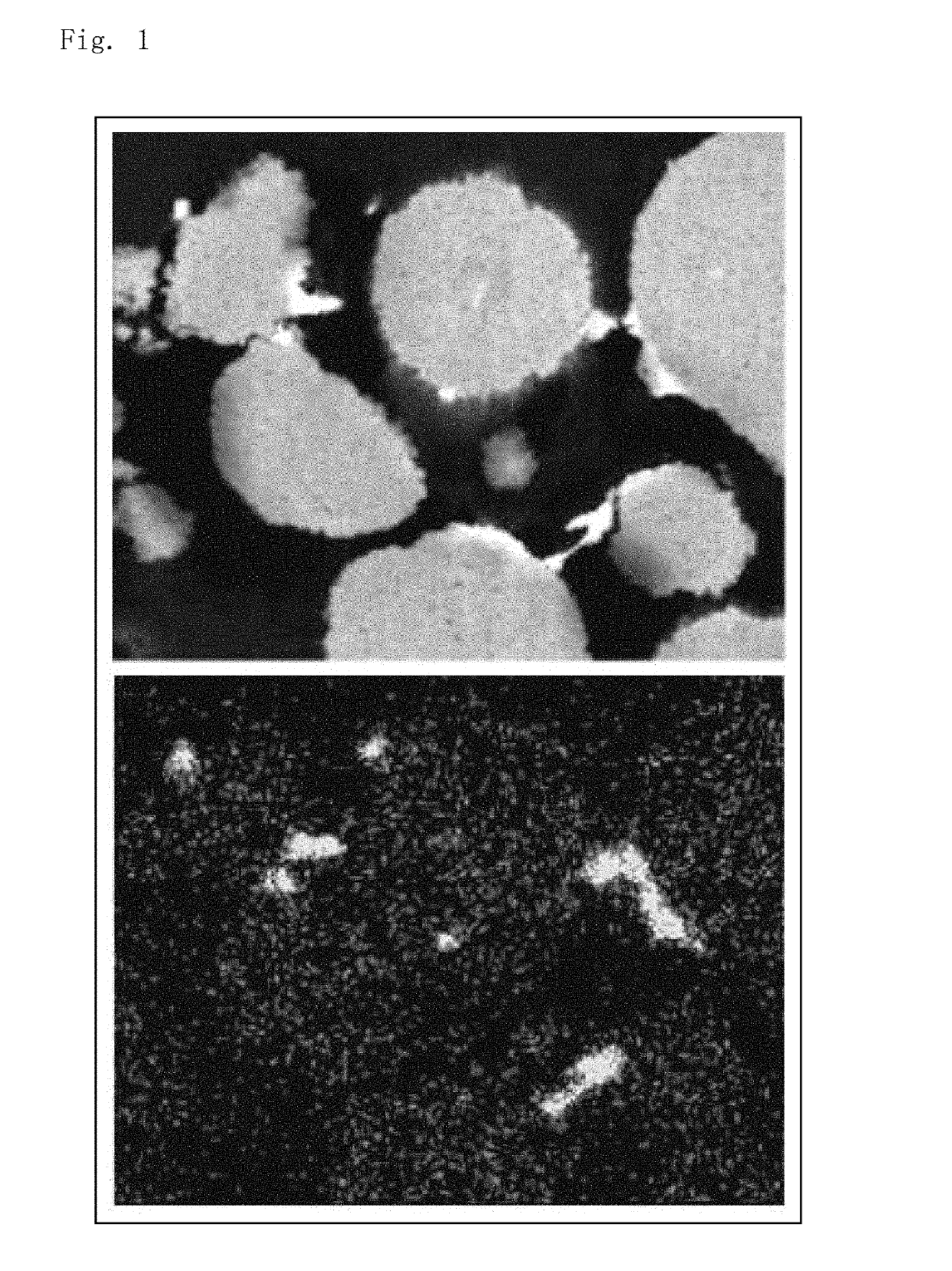Positive electrode active material for nonaqueous electrolyte secondary battery, method for producing the same, and nonaqueous electrolyte secondary battery including the same
a nonaqueous electrolyte and active material technology, applied in the direction of cell components, electrochemical generators, nickel compounds, etc., can solve the problems of easy degradation of battery performance, low cycle characteristic, and increased cost of active material and moreover batteries, etc., to suppress the deterioration of capacity after repeated charging and discharging, excellent cycle characteristic, and high initial capacity
- Summary
- Abstract
- Description
- Claims
- Application Information
AI Technical Summary
Benefits of technology
Problems solved by technology
Method used
Image
Examples
example 1
[Method for Producing Positive Electrode Active Material]
(Production of Composite Hydroxide)
[0078]Nickel sulfate and cobalt sulfate were mixed to prepare a mixed aqueous solution with a nickel concentration of 1.6 mol / L and a cobalt concentration of 0.3 mol / L. To a reaction tank, 900 mL of pure water, 8.5 mL of sodium hydroxide aqueous solution of 25% by mass, and 45 mL of ammonia aqueous solution of 25% by mass were added to produce a reaction liquid. While the liquid temperature was maintained at 50° C., nitrogen gas was supplied to the reaction tank so that the liquid in the reaction tank was not exposed to the air. While the reaction liquid was stirred, the mixed aqueous solution was supplied and moreover a sodium hydroxide aqueous solution of 25% by mass was added to make the solution in the reaction tank have a pH of 11.2 (based on a liquid temperature of 25° C.). By the coprecipitation method, nickel composite hydroxide (nickel cobalt composite hydroxide) containing spherical...
example 2
[0092]A positive electrode active material according to Example 2 was obtained and evaluated using the nickel composite hydroxide obtained in Example 1, in a manner similar to Example 1 except that a zinc sulfate aqueous solution prepared so that the zinc molar ratio became 0.05 (5 atom %) in the coating with zinc hydroxide was used. The crystallite diameter, the initial discharging capacity, and the capacity retention are shown in Table 1.
PUM
| Property | Measurement | Unit |
|---|---|---|
| crystallite diameter | aaaaa | aaaaa |
| crystallite diameter | aaaaa | aaaaa |
| crystallite diameter | aaaaa | aaaaa |
Abstract
Description
Claims
Application Information
 Login to View More
Login to View More - R&D
- Intellectual Property
- Life Sciences
- Materials
- Tech Scout
- Unparalleled Data Quality
- Higher Quality Content
- 60% Fewer Hallucinations
Browse by: Latest US Patents, China's latest patents, Technical Efficacy Thesaurus, Application Domain, Technology Topic, Popular Technical Reports.
© 2025 PatSnap. All rights reserved.Legal|Privacy policy|Modern Slavery Act Transparency Statement|Sitemap|About US| Contact US: help@patsnap.com


